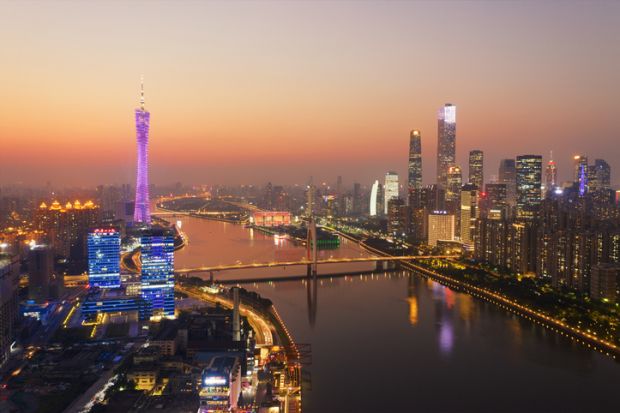China has overtaken the US in hosting the largest number of leading science and technology clusters, while Cambridge remains the world’s most intensive cluster judged against size of population, according to a ranking.
The Global Innovation Index (GII) looks at science and technology (S&T) clusters around the world by analysing patent-filing activity and scientific article publication.
According to a snapshot of 2023 findings, released ahead of full publication on 27 September, Tokyo-Yokohama is the top-performing cluster, followed by Shenzhen-Hong Kong-Guangzhou, Seoul, Beijing and Shanghai-Suzhou.
San Jose-San Francisco, home to Silicon Valley and Stanford University, follows in sixth.
“The highest climbers in the ranking are three clusters in China, namely, Zhenjiang (+15 positions), Hefei (+13) and Wuxi (+13),” says the GII report.
“For the first time, in 2023, China is the economy that has the most clusters (24) ranked among the top 100, overtaking the United States with 21 clusters unchanged on the year,” it also says. “Germany follows, with nine clusters in the top 100, with Munich now that economy’s number one cluster followed by Cologne and Stuttgart.”
The ranking also looks at the “intensity” of clusters: “the sum of their patent and scientific publication shares divided by population”.
“Cambridge in the United Kingdom and San Jose-San Francisco, CA, in the United States were found to be the two most S&T-intensive clusters, followed by Oxford (United Kingdom), Eindhoven (Kingdom of the Netherlands) and Boston-Cambridge, MA (United States),” says the GII report.
Deborah Prentice, vice-chancellor of the University of Cambridge, said: “Cambridge is a truly extraordinary place, where leading scientists work side by side with industry and academic partners, sparking ideas and creating life-changing medicines, technologies and services. I am thrilled to see it again recognised as one of the greatest innovation hubs on the planet.”
Diarmuid O’Brien, chief executive of Cambridge Enterprise, the university’s research commercialisation arm, said: “The Cambridge innovation ecosystem is home to a unique and driven community of exceptional science, people, companies and partners, tackling global challenges and changing lives.”
Irene Tracey, University of Oxford vice-chancellor, said: “I am thrilled to see Oxford recognised as a leading science and technology cluster, and I am extremely proud of the role that the university plays in catalysing innovation through its incredible research and talented people.
“Together with partners across the Oxfordshire ecosystem, such as Oxford University Innovation and Oxford Science Enterprises, alongside investment from the private sector nationally and internationally, we are working to create more space, more opportunities, and secure more investment to provide the optimum environment to accelerate innovation so that we continue to make global impact.”
The GII was founded in 2007 by Soumitra Dutta, now dean of the Saïd Business School at Oxford.
The GII report also says: “Clusters located in China show a relatively weaker performance, with regards to S&T intensity. However, there is one exception: Beijing. With a population estimated at almost 20 million, Beijing ranks 14th by intensity, mid-way between the smaller metropolises of Göteborg (13th) and Stockholm (15th) located in Sweden.
“Apart from Beijing, there is no other S&T cluster located in China or any other middle-income economy that ranks among the top 25 most intensive clusters globally.”
“India, however, does make it into the top 100 by S&T intensity for four clusters: Bengaluru, Chennai, Delhi and Mumbai,” the report adds.





